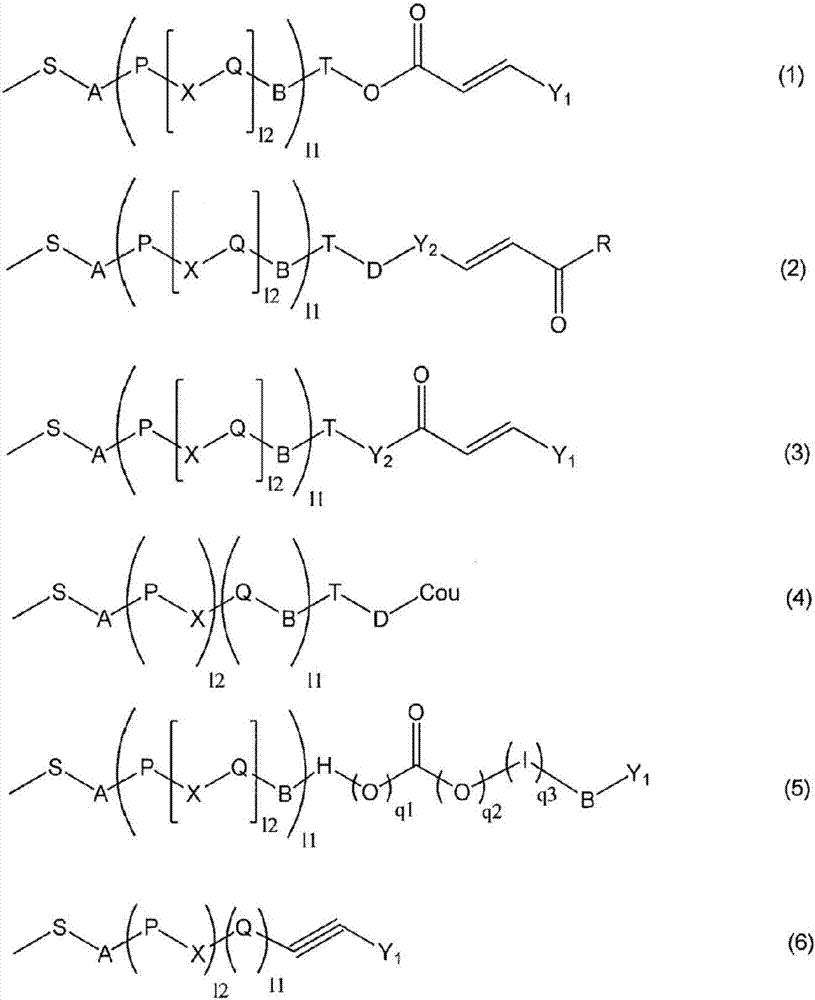Liquid crystal alignment agent, liquid crystal alignment film, and liquid crystal display element
A liquid crystal performance technology, applied in the field of new polymer compositions, can solve problems such as static electricity, dust generation, and inability to achieve liquid crystal orientation
- Summary
- Abstract
- Description
- Claims
- Application Information
AI Technical Summary
Problems solved by technology
Method used
Image
Examples
preparation example Construction
[0291] [Preparation of polymer composition]
[0292] The polymer composition used in the present invention is preferably prepared as a coating liquid so as to be suitable for forming a liquid crystal aligning film. That is, the polymer composition used in the present invention is preferably prepared by using the above-mentioned (A) component, (B) component, and the above-mentioned solvent and / or compound for improving film thickness uniformity and surface smoothness, and for improving liquid crystal. A solution obtained by dissolving an adhesive compound for an alignment film and a substrate, etc., in an organic solvent. Here, the total content of (A) component and (B) becomes like this. Preferably it is 1 mass % - 20 mass %, More preferably, it is 3 mass % - 15 mass %, Especially preferably, it is 3 mass % - 10 mass %.
[0293] In the polymer composition of the present embodiment, in addition to the (A) component and the (B) component, other polymers may be mixed within a ra...
Embodiment
[0362] Abbreviations used in Examples are as follows.
[0363]
[0364]
[0365] MA1 was synthesized by the synthesis method described in the patent document (WO2011-084546).
[0366] MA2 was synthesized by the synthesis method described in the patent document (Japanese Patent Laid-Open No. 9-118717).
[0367] HBAGE was purchased from Nippon Chemical Corporation.
[0368] A1 was synthesized by the synthesis method described in the patent document (WO2014-054785).
[0369]
[0370] ISO: Isophorone diisocyanate
[0371] DI-1: Isophorone diisocyanate
[0372] DI-2: Diphenylmethane-4,4’-diisocyanate
[0373] DI-3: 1,4-phenylisocyanate
[0374] DI-4: Toluene-2,4-diisocyanate
[0375]
[0376] DDM: 4,4'-Diaminodiphenylmethane
[0377] Me-4APhA: N-methyl-2-(4-aminophenyl)ethylamine
[0378] Me-DADPA: 4,4'-Diaminodiphenyl(N-methyl)amine
[0379] DA-2MG: 1,3-bis(4-aminophenoxy)ethane
[0380] BAPU: 1,3-bis[2-(4-aminophenyl)ethyl]urea
[0381] p-PDA: p-phenylenediami...
Synthetic example 1
[0397] MA1 (5.3g) and MA2 (19.6g) were melt|dissolved in THF (101.3g), and after degassing using a diaphragm pump, AIBN (0.39g) was added and degassed again. Then, it was made to react at 60 degreeC for 8 hours, and the polymer solution of the methacrylate was obtained. This polymer solution was added dropwise to methanol (600 ml), and the resulting precipitate was collected by filtration. This deposit was wash|cleaned with methanol, and it dried under reduced pressure in 40 degreeC oven, and obtained the methacrylate polymer powder MP1.
PUM
| Property | Measurement | Unit |
|---|---|---|
| wavelength | aaaaa | aaaaa |
| wavelength | aaaaa | aaaaa |
Abstract
Description
Claims
Application Information
 Login to View More
Login to View More - R&D
- Intellectual Property
- Life Sciences
- Materials
- Tech Scout
- Unparalleled Data Quality
- Higher Quality Content
- 60% Fewer Hallucinations
Browse by: Latest US Patents, China's latest patents, Technical Efficacy Thesaurus, Application Domain, Technology Topic, Popular Technical Reports.
© 2025 PatSnap. All rights reserved.Legal|Privacy policy|Modern Slavery Act Transparency Statement|Sitemap|About US| Contact US: help@patsnap.com



